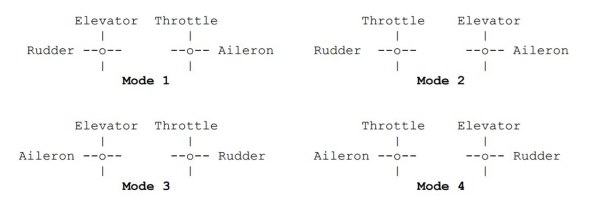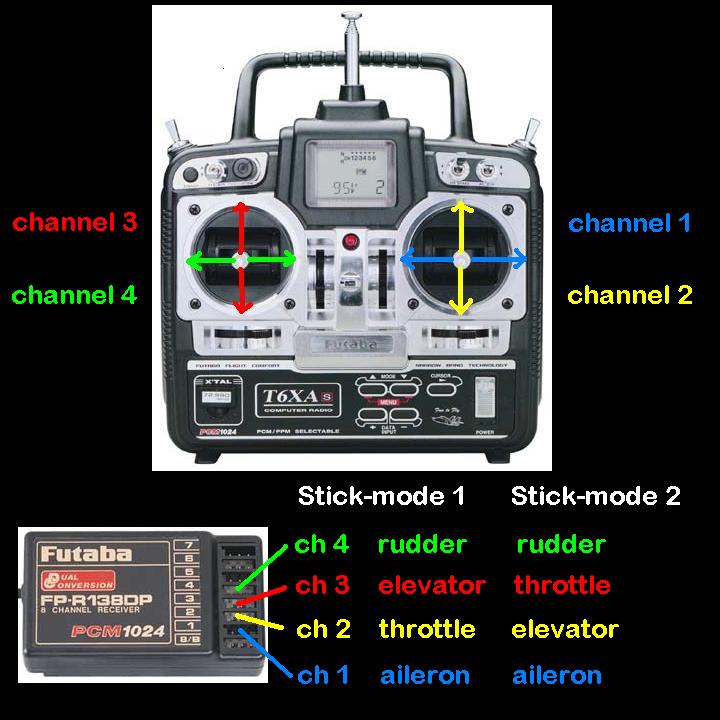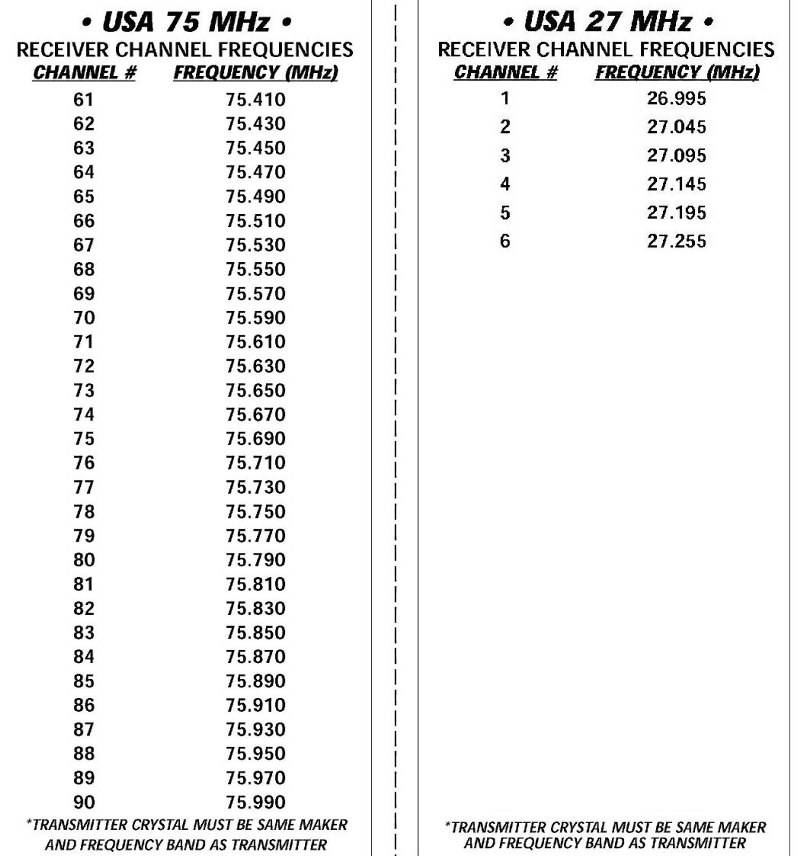CustomRCmodels R/C Tank's | home
Transmitter Stick-mode
transmitter stick-mode = which stick will control which function/channel
quite often there is a confusion about the channel-setup for the different models ,
especially in the usually very accurate Tamiya manuals
there are 4 differnt Stick-modes ,
yes 4 , not only 2 as most of us think.......

but I will stick in this article just to the mode 1 and mode 2...
mode 4 is commonly used on European and Japanese systems ,
which explains why the Tamiya manuals don't match to the USA systems
( having to swap channel 2 and 3 )
in the USA we get mostly confronted with mode 1 and mode 2 ,
where mode 2 is the most commonly used one ....
or I should better say , that's the default mode the transmitter's for the USA market are set on...
and it doesn't make it easier for a newcommer
that most manuals for multi-channel ( 4 or more channels ) R/C systems
are written for the fly-boy's...,
the ground-guy's , tank's and truck's , have bean so far always being neglected ....
I hope the following info's will help a little to bring a light in this confusion ......
here first an image out of a Tamiya tank-manual :

if you check the setup-manual ,
you will see that according to the manual ,
the left stick should control the throttle and the turret-rotation ,
and the right stick the turning and gun-elevation, gun- and machine-gun-firing.....
if you take a closer look at my next image ,
you will understand now why this is not correct :

I used here the fly-boy's term's , since that's what you will find in most transmitter-manual's...
here now a translation into ground-terms :
airplane : tank :
rudder = turret rotation
throttle = throttle
elevator = gun elevation / gun firing
aileron = steering
therfore to set it up to get the functions as descripted in the Tamiya manual
( by using a transmitter with Stick-mode 2 )
you have to switch the channels as follows :
Tamiya manual : this is how it should be :
rudder = ch 1 rudder = ch 1
throttle = ch 2 throttle = ch 3
gun = ch 3 gun = ch 2
turret = ch 4 turret = ch 4
they are tanker's they use the Tamiya-setup on purpose ,
to get the joy-stick-style driving , meaning throttle and steering on the same stick ...
throttle/steering left stick : throttle/steering right stick :
rudder = ch 4 rudder = ch 1
throttle = ch 3 throttle = ch 2
gun = ch 2 gun = ch 3
turret = ch 1 turret = ch 4
since this applys also to the trucker's
here now the trucker-term's :
airplane : truck :
rudder = gear-shifting
throttle = throttle
elevator = 5th wheel operation
aileron = steering
so if you set up your truck that you do have the throttle and shifting on the left stick ,
it should look like that :
throttle = ch 3
shifting = ch 4
steering = ch 1
5th wheel = ch 2
USA legal ground frequencies for Hobby R/C systems :

besides 75 and 27 MHz you could also use 50 MHz ,
as long you do have a required FCC amateur (ham) radio license !
There are ten channels within the 50MHz range and for RC use they are limited to 1W max power.
50.800 MHz - Ch RC00 / 50.820 MHz - Ch RC01 / 50.840 MHz - Ch RC02 /
50.860 MHz - Ch RC03 / 50.880 MHz - Ch RC04 / 50.900 MHz - Ch RC05 /
50.920 MHz - Ch RC06 / 50.940 MHz - Ch RC07 / 50.960 MHz - Ch RC08 /
50.980 MHz - Ch RC09
then as the latest addition to available channels / frequencies
is the 2.4 GHz also known as Spectrum or DSM .
While other frequencies require that a specific channel be selected (through the use of crystal sets),
special software within the receiver and transmitter of a 2.4GHz DSM radio system work to set the specific frequency channel
within the very wide 2.4GHz range, locking out interference from other systems operating within the 2.4GHz range in your operating area.
There is no need to change out crystals or select specific channels yourself. The transmitter/receiver do it for you.
The DSM transmitters/receivers using the 2.4GHz frequency range can be used in many countries,
including the US and are found with both surface and air vehicles.
if you want to do some more reading about frequencies :
I hope these info's will help ....
let me know if there is anything I should add ,
or correct ....or if you have any questions about it....
Willy
December 2004
